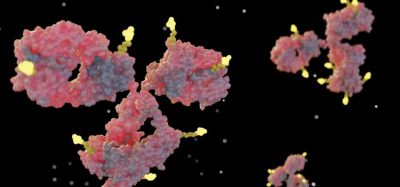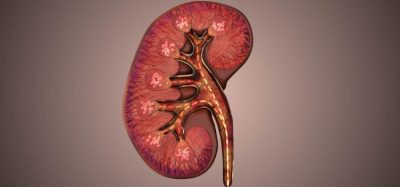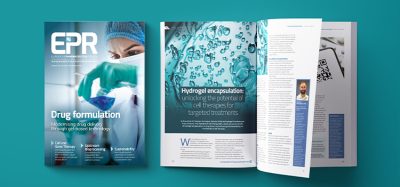Analyses presented at EASD support Trajenta® (linagliptin) as effective and well-tolerated for patients with type 2 diabetes with different background therapies
Posted: 2 October 2012 | | No comments yet
Boehringer Ingelheim and Eli Lilly and Company today announced results from a large Phase III study and three pooled analyses of Phase III data presented at the 48th European Association for the Study of Diabetes (EASD) Annual Meeting, which support Trajenta® (linagliptin) as effective and well-tolerated for patients with type 2 diabetes (T2D), including the elderly and those with diabetic nephropathy.1,2,3,4
Linagliptin is a once-daily tablet that is used as monotherapy in patients inadequately controlled by diet and exercise alone and for whom metformin is inappropriate due to intolerance, or contraindicated due to renal impairment. Linagliptin is also approved in combination with metformin and metformin + sulphonylurea.5
“Unfortunately type 2 diabetes can be a complex and challenging condition to treat,” said Prof. Klaus Dugi, Corporate Senior Vice President Medicine, Boehringer Ingelheim. “Many patients are elderly, or are affected by co-morbidities. As our clinical evidence base grows, so does our confidence that linagliptin offers an effective and well-tolerated treatment option for patients with type 2 diabetes in need of effective blood glucose control.”
Boehringer Ingelheim and Eli Lilly presented the results of a Phase III study, which evaluated the long-term safety and efficacy of the addition of linagliptin vs. placebo in 1261 patients inadequately controlled on basal insulin therapy*. The overall safety and tolerability for linagliptin was comparable to placebo. The incidence of hypoglycaemia was also comparable in both groups (linagliptin 31.4%, placebo 32.9%), despite better glycaemic control with linagliptin (-0.53% placebo-adjusted change in HbA1c from baseline at week 52 (P<0.0001). HbA1c is measured in people with diabetes to provide an index of blood glucose control for the previous two to three months. Body weight was stable over the treatment period in both groups.1
Linagliptin as add-on to basal insulin therapy* has also shown safety and efficacy in elderly patients (≥ 70 years) in a separate pre-specified pooled analysis of two Phase III studies, evaluating linagliptin vs. placebo as add-on therapy to basal insulin and as T2D management in elderly patients, over 24 weeks. Elderly patients with T2D are commonly characterised by longer disease duration and diminished beta-cell capacity, which often requires combination therapy with basal insulin. In this vulnerable elderly population, linagliptin in combination with basal insulin was well-tolerated with the overall incidence of adverse events (AE) not higher than placebo. Linagliptin achieved improvements in glycaemic control of -0.77% (placebo-adjusted change in HbA1c from baseline (P<0.0001)), without excessive risk of hypoglycaemia (hypoglycaemia occurred in 28.6% on linagliptin and 37.2% on placebo).4
A third analysis of seven Phase III trials assessed a variety of safety and efficacy parameters associated with linagliptin use in elderly T2D patients (≥ 65 years) as monotherapy or add-on to various glucose-lowering therapies. Results from this analysis showed that linagliptin is well-tolerated and might be a treatment option for elderly patients (≥ 65 years) without the need for dose adjustment.*
Linagliptin showed a reduction in glucose levels as measured by a −0.62% (P<0.0001, placebo-adjusted) change in HbA1c from baseline to week 24. Patients treated with linagliptin also experienced a significantly greater reduction in fasting plasma glucose (FPG) (placebo-adjusted mean change of −14.8 mg/dL, P<0.0001; −0.82 mmol/L) and the number of AEs was not higher than those on placebo (71.3% vs. 73.3%). Drug-related AEs were also not higher with linagliptin compared to placebo (18.1% vs. 19.8%).3
“This is very encouraging data in this often challenging-to-treat patient population,” said Professor Anthony Barnett, Emeritus Professor of Medicine, University of Birmingham, UK. “Many elderly patients have additional safety and tolerability concerns, such as co-morbidities, compromised renal function and heightened risk of hypoglycaemia. Linagliptin appears to be an effective and well-tolerated treatment option for type 2 diabetes in the elderly without the need for dose adjustment or extra monitoring even if kidney function declines. In a situation where treatment choices are more and more limited, linagliptin is a welcome addition to our therapeutic armamentarium.”
In a separate analysis, linagliptin showed efficacy in another vulnerable T2D patient population – those with diabetic nephropathy. Many patients with T2D have diabetic nephropathy shortly after diagnosis, and may go on to develop end stage kidney disease. Currently, there are only very limited oral treatment options available for T2D patients with renal disease. An analysis of seven randomised trials was performed and data after 24 weeks of treatment were generated to allow pooling and two sets were defined: Diabetic nephropathy in earlier stages of T2D: patients with persistent albuminuria (30<=UACR [Urine Albumin-to-creatine Ratio] <=3000 mg/g) and stable treatment with an ACEi [Angiotensin Converting Enzyme inhibitor] or ARB [Angiotensin II Receptor Blocker] (Set 1); Diabetic nephropathy in elderly patients (≥65 years), who fulfilled UACR criteria (Set 2). Patients from Set 1 were treated with or without oral glucose lowering background therapies and patients from Set 2 had various glucose lowering background therapies, including insulin therapy.
Patients in Set 1 experienced placebo-corrected changes in HbA1c and fasting plasma glucose of -0.71% and -1.4 mmol respectively (both P<0.0001). Linagliptin also significantly lowered UACR by 33% (P<0.05). In Set 2 Linagliptin significantly lowered adjusted UACR by 30% (P<0.05). The reduction of albuminuria was beyond what may be expected by the glucose-lowering effects of linagliptin in both Sets.2
Linagliptin (5 mg, once daily) is marketed in Europe as Trajenta® (linagliptin) and in the U.S. as Tradjenta® (linagliptin), as a once-daily tablet that is used along with diet and exercise to improve glycaemic control in adults with T2D. Linagliptin should not be used in patients with Type 1 Diabetes or for the treatment of diabetic ketoacidosis (increased ketones in the blood or urine). In Europe, Linagliptin is not approved for use in combination with insulin. With linagliptin, no dose adjustment is required regardless of declining renal function or hepatic impairment**.5
About Diabetes
An estimated 366 million people worldwide have diabetes.6 T2D is the most common type, accounting for an estimated 90% of all diabetes cases.7 Diabetes is a chronic condition that occurs when the body either does not properly produce, or use, the hormone insulin.8
References
- Yki-Järvinen H, Rosenstock J, Durán-Garcia S, et al. Long-term safety and efficacy of linagliptin as add-on therapy to basal insulin in patients with type 2 diabetes: a 52-week randomised, placebo-controlled trial. Oral presentation no 6 Presented at the 48th European Association for the Study of Diabetes (EASD) Annual Meeting, Berlin, Germany. 2012 1-5 October 2012.
- Groop P, Cooper M, Perkovic V, et al. Effects of the DPP-4 inhibitor linagliptin on albuminuria in patients with type 2 diabetes and diabetic nephropathy. Abstract. 2012 1-5 October 2012.
- Patel S, Schernthaner G, Barnett A, et al. Safety and efficacy of linagliptin in elderly patients with type 2 diabetes: evidence from 1331 individuals aged ≥=65 years. Presented at the 48th European Association for the Study of Diabetes (EASD) Annual Meeting 1-5 October, Berlin, Germany. 2012 1-5 October 2012.
- Woerle HJ, Neubacher D, Patel S, et al. Safety and efficacy of linagliptin plus basal insulin combination therapy in a vulnerable population of elderly patients (age = 70 years) with type 2 diabetes. Presented at the 48th European Association for the Study of Diabetes (EASD) Annual Meeting 1-5 October, Berlin, Germany. 2012 1 – 5 October 2012.
- EMA. Trajenta® (linagliptin) tablets. EMA Summary of Product Characteristics. 2011.
- International Diabetes Federation. The Global Burden. IDF Diabetes Atlas. 2011(5th Edition).
- World Health Organization: Fact Sheet No. 312 What is Diabetes?, 2010.
- International Diabetes Federation. What is Diabetes? . IDF Diabetes Atlas. 2011(5th Edition).
*Currently linagliptin is approved for use as add-on therapy to insulin in the US. It is not currently approved for use in this indication in the EU.
**Please also see EU SmPC.









